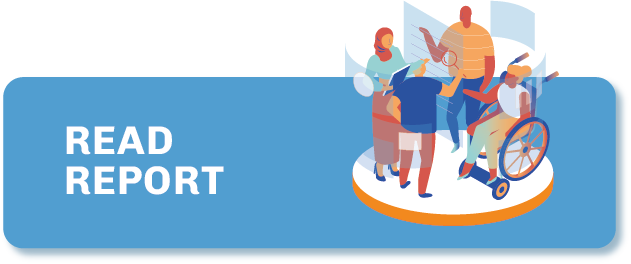Slovenia
Slovenia has a small but vibrant independent digital media community, established in part as a response to the perceived inability of legacy media to foster quality journalism. The main social media platform utilised for the dissemination of news in the country is Facebook, followed by Twitter, Instagram and newsletters.
GENERAL INFORMATION
Press
freedom
ranking
Internet
penetration
POPULATION
Media organisations
in the Directory
TYPE OF COVERAGE

TYPE OF ORGANISATION

GENDER OF FOUNDERS

Press freedom
In Slovenia has deteriorated in recent years, with the country falling 18 places from 36th position in 2021 to 54th position in 2022 on the Reporters Without Borders Press Freedom Index. This steep fall is attributed to the-then government’s “war on media”, which included attempts at changing the country’s media legislation, SLAPP suits (strategic lawsuits against public participation) and pressure on the public broadcaster.
Additionally, public funds have been withdrawn from independent media outlets that cover independent cultural production and defend human rights, media freedom and the environment. Slovenia is among the European Union members that most disproportionately restricted freedoms during the pandemic, according to a report on press freedom in the country by Media Freedom Rapid Response. The alarming state of press freedom in Slovenia has also been noted by the European Parliament and by the European Commission’s annual Rule of Law report.
Market structure and dominance
Slovenia’s media market is small and shaped by high media ownership concentration. This concentration is highest in the radio sector, followed by the print and audiovisual sectors. The country’s media legislation remains unadapted to global digital players; although regulations on media ownership exist, enforcement is inefficient, according to the Monitoring Media Pluralism in the Digital Era (MPM 2021) report by the Centre for Media Pluralism and Media Freedom. According to the report, Slovenia is ranked as a medium-risk country due to its high concentration of media ownership.
How media is funded
Public funding of media organisations is regulated by the country’s Mass Media Act, which in article 4a specifies public funding as a condition for ensuring pluralism and democracy of the media. Nevertheless, this funding can be subject to political manipulation. Although the main source of revenue for private media outlets comes from subscriptions, sales and advertising, there are limited resources for advertising due to the small size of the market. As a result, media organisations are often vulnerable to foreign and domestic political and private interest influences. One example of foreign political intervention can be seen in the numerous Slovenian media outlets backed by Hungarian corporations close to the Fidesz government (the right-wing populist and national-conservative Hungarian Civic Alliance) that have directly supported specific political parties in Slovenia, according to the Civicus Monitor’s country update on Slovenia.
Nine profiles of digital native media organisations from Slovenia are included in the directory. All of these are non-profit organisations with a small number of employees (generally under five people), while two are not yet formalised.
Notably, three media outlets which took part in the research (Oštro, Mešanec and Metina lista) were established by journalists who distinguished themselves at legacy media organisations, but then decided to work in the precarious conditions of independent media as a means of allowing themselves to continue serving the public. All of the interviewees felt that the failings of legacy media organisations was one of the primary reasons for establishing an independent platform.
The difference between new media in relation to legacy media is not necessarily in the variety of subjects or specific topics that they cover, but rather in their approach, as working for an independent digital platform allows for more freedom to pursue in-depth stories and investigations. The notable exception is in arts and culture, as these topics are being progressively neglected by legacy media outlets. Two of the media outlets included in the directory (Koridor and Neodvisni) focus primarily on arts and culture, and most of the other organisations cover arts and culture in their reporting.
Due to the small market, advertising revenue is almost non-existent. Interviewees have expressed uncertainty over the future due to unstable economic conditions as well as grants-based work, which makes long-term staffing unviable. As a testament to the precarious conditions of independent digital media outlets in Slovenia, it must be noted that more than half (six) media outlets included in the research rely on the volunteer efforts of their contributors and editors; four organisations (In Media Res, Rdeča pesa, Mešanec and NORadio) are fully volunteer-based, and two (Koridor, Metina lista) partly rely on the volunteer efforts of their contributors.
Although the independent digital community is small, there is no tangible cooperation in terms of content sharing or collaboration on stories, although they do collaborate in other capacities, for example in training and consultancy work.
Slovenian independent digital native media outlets operate in an unsustainable environment and with an uncertain future. Project-based grant funding is forcing journalists to focus on predetermined topics and areas that might limit their ability to cover issues that might be more crucial, or they are forced to cover these stories through volunteer work. Independent digital media organisations in Slovenia do not have adequate administrative staff, which means that sometimes journalists and editors also need to work on administration, finance, proposals, project reporting and communications, further limiting their ability to carry out quality journalism. Precarious working conditions also have an effect on the quality of their work as well as an impact on their physical and mental health.
Last updated: December 2022
CREDIT FOR STATISTICS: Press Freedom statistics, RSF Press Freedom Index 2022; Internet penetration and population statistics, from Internet World Stats

